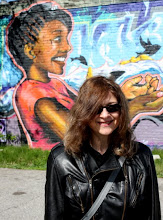

There’s nary a trace of this delightful Henry in The Other Boleyn Girl, a salacious dramatization of events in the 16th-century House of Tudor. The king in this movie is played by Eric Bana, who, with his liquid brown eyes and chiseled torso (see beefcake photo, above right) is closer in spirit to a Harlequin romance hero than to Henry VIII. And the movie is a romance novel, sort of: it’s based on a book by British author Philippa Gregory, a specialist in sexed-up potboilers loosely based on royal history. Needless to say, her books are bestsellers.
Exercise: Compare and contrast the corpulent Henry VIII and the hunky Eric Bana.
The movie, directed by Justin Chadwick, focuses on Mary Boleyn, sister of Anne Boleyn, the outspoken second wife of Henry VIII, who was beheaded on charges of adultery and incest after she failed to produce a son (she was the mother of the future Elizabeth I). In this story, Mary is the virginal younger sister of Anne, who becomes the king’s mistress and bears him a son before he turns his eye toward Anne, whose insistence on marriage leads Henry to break with Rome so he can divorce his wife.
In real life, Mary Boleyn was Anne’s older sister and known for her sexual exploits with Henry and King Francois I of
After Henry’s first wife, Catherine of Aragon (Ana Torrent, in a dignified performance), gives birth to a stillborn child, it becomes known that the king will soon seek a new mistress. The Boleyns decide to proffer Anne, since Mary is newly married. We know, by the way, that Mary is the younger sister, because Anne says to Mary on her wedding day, “Look at you. Younger than me. Married before me.” Amazingly, this clunky dialogue issued from the pen of Peter Morgan, who wrote the very literate script for The Queen.
On a country holiday with the Boleyns, the king takes a shine to Mary. He appoints her a lady-in-waiting to the Queen, then seduces her in a bedroom scene that is the height of improbability. Doffing their fur-lined robes and reclining before a roaring fire, they make sweet love. This is the essence of the romance novel: he’s ruthless, he’s powerful, but oh so tender!
In the interest of research, I plucked a romance novel the other day from the shelf at Goodwill. It was titled Thunder’s Tender Touch, and on the cover, beside the bare-chested swain and quivering young virgin, it read, “She detested his domineering ways, but couldn’t deny the magic of his touch.” That sums up this movie’s sensibility. At least the romance novel is honest about what it is. The Other Boleyn Girl, on the other hand, has lofty pretensions, but it’s really about the bosom-heaving sex. “Did he have you?” Mary is asked by her family after the kingly coitus. “More than once?” It's all rather yucky. There is also a disturbing emphasis on gynecological detail: Mary’s screams in childbirth, Anne’s bloody miscarriage, Queen Catherine’s menstrual cycle. And then there is the rape scene, wherein Henry, frustrated by Anne’s demurrals while he rearranges history to suit her, brutally ravishes her, roaring, “You’ll show me it was worth my while!”
Visually, the movie is a feast, I suppose, for those who like historical costumes, and the acting is slightly better than you might expect from a largely American cast. But, like any trashy paperback, it leaves you feeling a little cheap.
Originally published in the Cleveland Free Times. Visit them here.

No comments:
Post a Comment